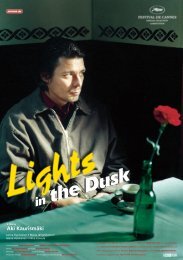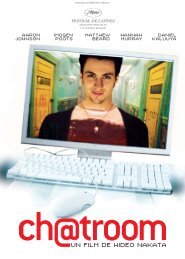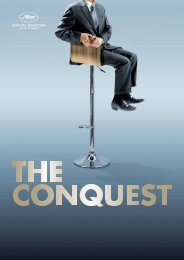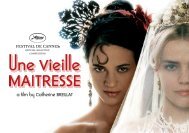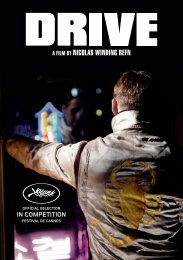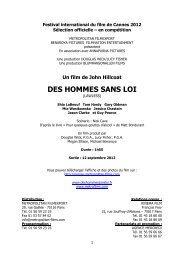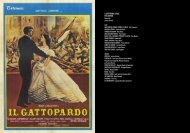English - Cannes International Film Festival
English - Cannes International Film Festival
English - Cannes International Film Festival
Create successful ePaper yourself
Turn your PDF publications into a flip-book with our unique Google optimized e-Paper software.
Then producers Adam Dawtrey and Mary Bell came on board. I’d known<br />
them for years and we had often talked about children and film. They were<br />
the film industry producers on the 8½ Foundation, a project about kids and<br />
cinephilia that I did with Tilda Swinton, Matt Lloyd and Tamara Van Strijthem.<br />
As I wrote the script, I started to choose the films that I would feature. I knew<br />
that I wanted them to be very international. I wanted some classics but lots of<br />
less well known movies too, not because they are less familiar, but because<br />
they are great. I also knew that a lot of the movies would be directed by<br />
women. I asked for suggestions of kids films from a great Swedish producer,<br />
Anita Oxburgh, and from the director of the Karlovy Vary <strong>Film</strong> <strong>Festival</strong>, Karel<br />
Och. Most of all, my friend Neil McGlone sent me some remarkable films I<br />
hadn’t seen, including Melody for a Street Organ by Kira Muratova, a director<br />
whose work I’ve been passionate about, and been talking about, for years.<br />
Neil became invaluable to me in my selection, and is the film’s researcher and<br />
film advisor.<br />
The editor who has cut all my feature length films, Timo Langer, started<br />
cutting the movie. Usually Timo and I’d have a two metre long timeline pinned<br />
onto the wall of the edit suite, but this time we only had a print of a small<br />
painting by Paul Cezanne. This is because we felt that we were not making<br />
something too linear, rather we were editing a portrait film, a documentary<br />
with different hues and tones. This was an unusual move, I think, but we<br />
wanted to challenge ourselves.<br />
I had written an opening of the film to be shot in Saint Remy in France, where,<br />
in 1889, the painter Vincent Van Gogh was in hospital and convalesced.<br />
Producers Adam and Mary set up a half day shoot there. We filmed in the<br />
room where Van Gogh slept. I wanted the window open so that the curtains<br />
would blow. It was so windy outside that the pictures in the room nearly blew<br />
off the walls. Marc Benoliel was our steadicam DOP for this shot. I wanted to<br />
be able to see the landscape from well inside the building. This meant lighting<br />
the rooms to make them brighter so that, even from far back, we could see<br />
the outside.<br />
The steadicam shot recurs at the end of our film. I wanted it to look slightly<br />
different the second time so asked Marc to use a 50mm lens for the second<br />
shot, compared to a 35 mm lens for the first, thus changed the depth of field.<br />
We arranged for two French children, Salvador and Ines, to play with balloons<br />
in the field outside Van Gogh’s room. This refers to something that happens<br />
in the film itself.<br />
Then we came back from France and finished cutting the film. As we did,<br />
Adam talked to me about how, from the birth of cinema, the movie camera<br />
has always been drawn to children, and, in the era of camcorders and then,<br />
more recently, phone cameras, kids have been amongst the most filmed<br />
things. Talking together, we realized that no other art form has ever been so<br />
obsessed with the experience of childhood. I had been writing about the




